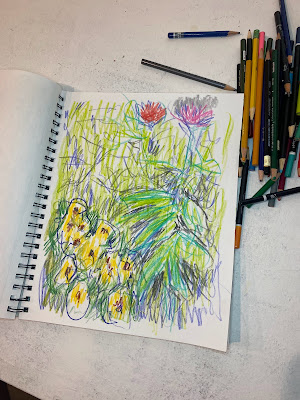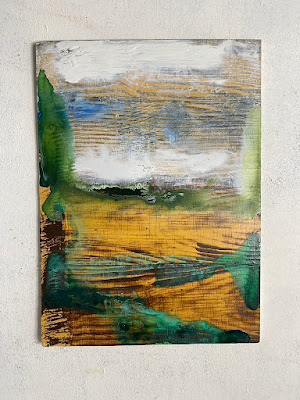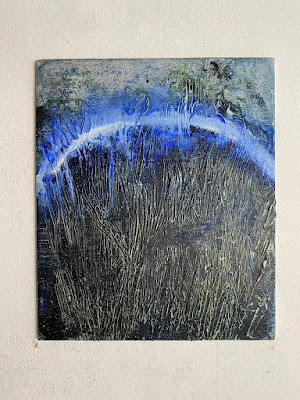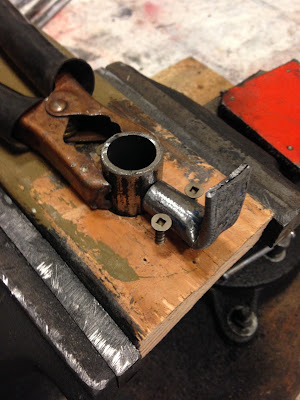This summer I’ve been doing "plein air" flower drawings with colored pencils. I found an old spiral bound sketch book that was empty. I challenged myself to fill it up by the end of the summer. Consequently, I work fast, getting down what I see as quick as I can. Sometimes I am holding three or four pencils at a time drawing in different colors. Letting them blend and fill large areas. I have never really worked with colored pencils much before so this has been fun, learning how to use them.
I have been going with a friend about once a week to various parks within walking distance to the studio. My friend has been working in watercolors and I, in colored pencils.
Making these drawings has given me a couple of things to think about. First is the difference in drawing from life vs working from photos. I take pictures of these flowers scenes so I can make drawings later in the studio. I find that working from the pictures I can’t visualize the depth as well, where my on site drawing I find myself working much more with it. It seems more important for me to incorporate depth into the sketch when I work on site.
I have also been thinking about textures. Recreating the textures of the leaves, flowers, and glass. I got to check out some Van Gogh drawings this summer at the Met. He had a great way of simply creating different textures of landscape with simple line work.
This work has motivated me into wondering how I could translate these into paint. The artist Joan Mitchell comes to mind as an artist that has taken this vision of landscape to some conclusions. Also I found the exhibition of Cecily Brown at the Met quite instructive and much on my mind while working on these.























































